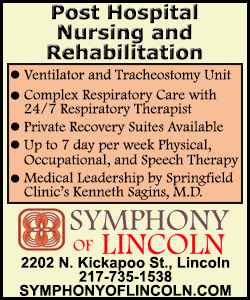|
 “We always sort of take it for granted the people will call 911, and
this is the first study to really take a step back and say, gosh
there's real barriers that we need to talk about,” said Dr. Comilla
Sasson, who led the new study. “We always sort of take it for granted the people will call 911, and
this is the first study to really take a step back and say, gosh
there's real barriers that we need to talk about,” said Dr. Comilla
Sasson, who led the new study.
People who live in poor and minority neighborhoods are more likely
to suffer cardiac arrest outside of a hospital, and less likely to
receive bystander cardiopulmonary resuscitation (CPR) or to survive,
Sasson and her colleagues write in Annals of Emergency Medicine.
The results of the survey point out several misconceptions that need
to be addressed in such communities, like the fear that first
responders “aren’t going to help you unless you’re documented or
that they’re going to arrest you,” Sasson, an emergency physician at
the University of Colorado School of Medicine, told Reuters Health.
“It's something we spent a lot of time here in Denver really talking
to our police officers and talking to our community members to let
them know that if you call 911 we're not going to ask for
identification - we're here to help you,” Sasson said.

For their study, Sasson and colleagues recruited residents of five
low-income, primarily Latino neighborhoods in Denver to form focus
groups and do individual interviews to find out what might prevent
them from calling 911, learning CPR or performing it.
A total of 55 people participated in six focus groups, along with an
additional nine individual interviews.
The researchers identified six major barriers to calling 911,
including the fear of law enforcement if the bystander was
undocumented or had a criminal history.
Participants also misunderstood or were not aware of Good Samaritan
laws and worried that law enforcement or the victim’s family would
blame them if the person did not survive.
Cultural and language issues were also important. For instance,
there was considerable concern about the propriety or safety of
touching another person, especially a stranger, in the chest area or
on the mouth.
“I don’t know if it’s limited to Hispanic culture or not, but the
hesitancy to touch another person, especially in the chest, and if
it’s a woman, oh my goodness . . . Uh, there is great hesitation on
the older people’s part,” said one participant.
Many also expressed the fear of not being able to communicate with
an emergency dispatcher.
“One of the things we found that’s specific to the Latinos in
Denver, and I think it's something that's important for people to
know, is when you do call 911 how to say the right words to get
through faster,” Sasson said.
[to top of second column] |

It can take 5 to 10 minutes for the dispatcher to communicate with
somebody who doesn't speak English while trying to figure out the
medical emergency, Sasson said, so she trains people in the
community to say “heart stopped, Spanish interpreter” when they call
911.
“It's not rocket science by any means, but ‘heart stopped’ triggers
that this is a medical emergency,” Sasson said, and saying “Spanish
interpreter” immediately lets the operator know they don’t speak
English.
The main reasons people gave for not learning CPR included the cost,
lack of classes and not being aware of how CPR can save lives.
“We know from the research we've done that Latinos are 30 percent
less likely to have CPR performed and what the study really showed
it was not that Latinos don't want to do CPR or that they're afraid
of it,” Sasson said.
“It's truly, I think, that we haven't gotten the messaging out on
how important it is and how easy it is to do, especially now that
you can do it without breathing into somebody’s mouth - you can do
hands-only CPR.”
Sasson said the American Heart Association has a Spanish-language
website at heart.org/rcp with training materials and a 60-second
video that people can watch to learn how to do hands-only CPR in
Spanish.
“Cardiac arrest is a major public health problem and bystander CPR
significantly improves your odds of survival on the order of
tripling (them) and there's large disparities in who receives
bystander CPR,” Dr. Ben Bobrow, who wasn’t involved in the study,
told Reuters Health.

“There’s both economic and racial disparities in who has access to
life-saving therapy like CPR and it’s unacceptable that people
shouldn't have access to simple life-saving interventions like CPR,”
said Bobrow, who is medical director of the EMS and Trauma System in
the Arizona Department of Health Services and the University of
Arizona College of Medicine in Tucson.
SOURCE: http://bit.ly/1z3rEdQ Annals of Emergency Medicine, online
December 2, 2014.
[© 2014 Thomson Reuters. All rights
reserved.] Copyright 2014 Reuters. All rights reserved. This material may not be published,
broadcast, rewritten or redistributed. |